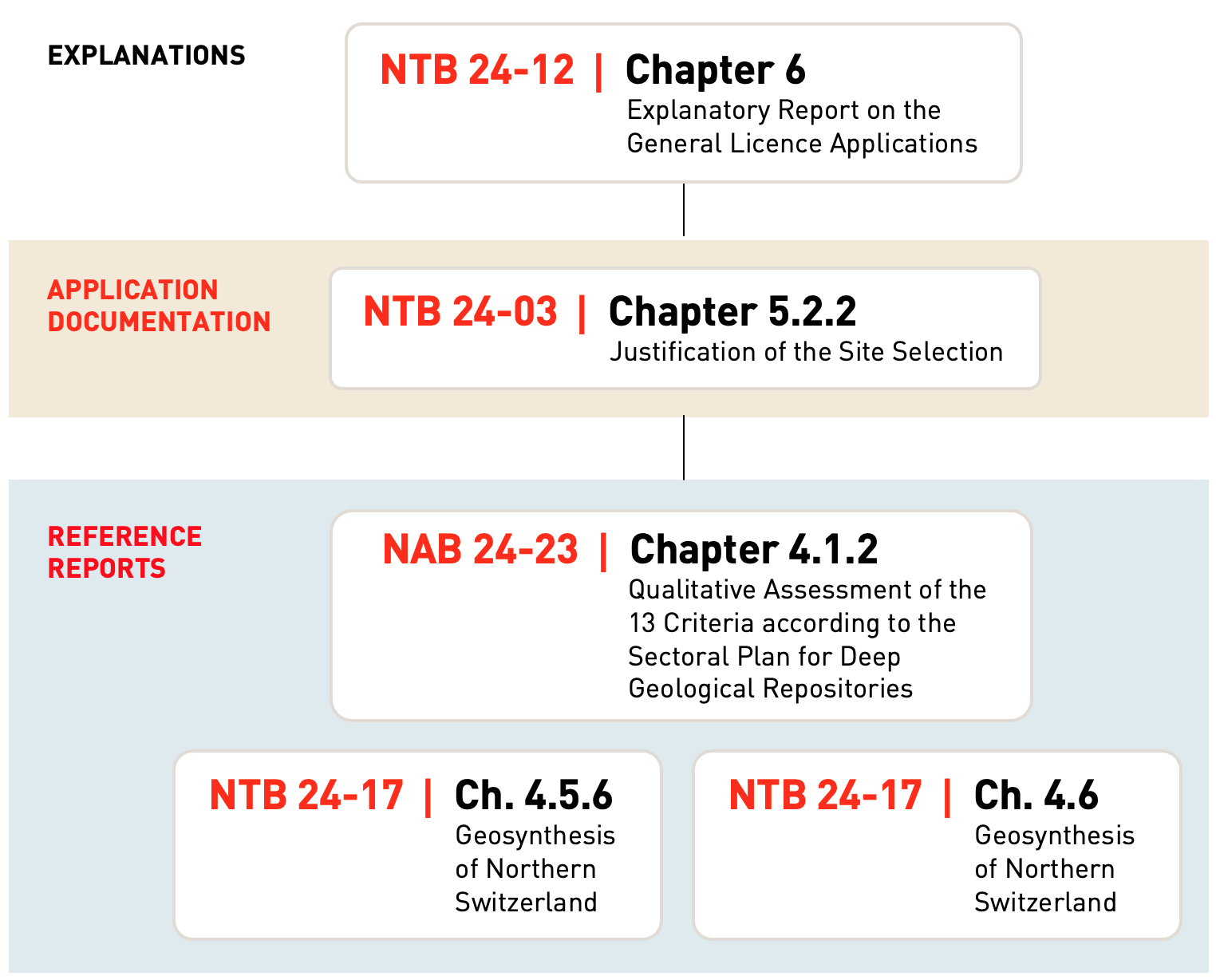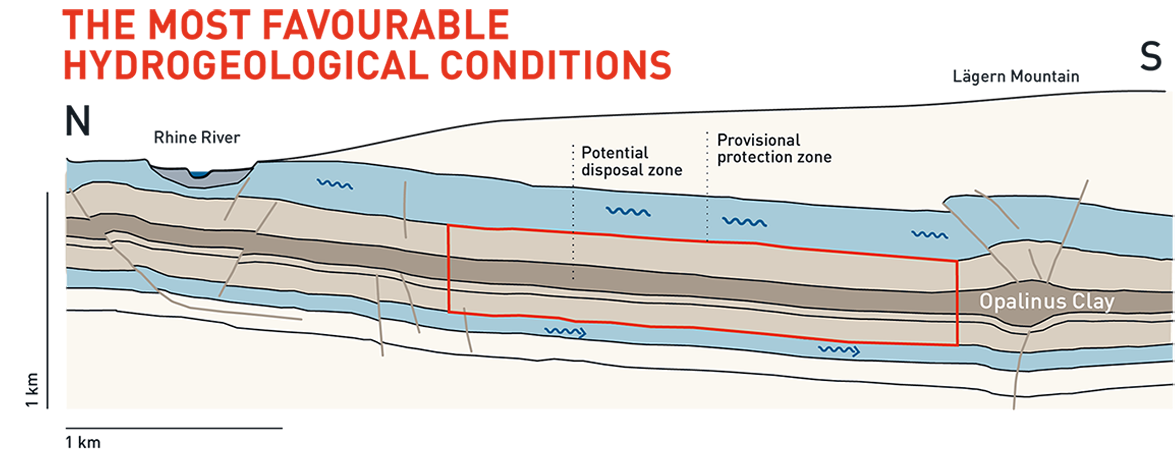 The most favourable hydrogeological conditions are one of the central arguments for selecting Nördlich Lägern as the site for a deep geological repository (Explanatory Report on the General Licence Applications, NTB 24-12, Chapter 6).
The most favourable hydrogeological conditions are one of the central arguments for selecting Nördlich Lägern as the site for a deep geological repository (Explanatory Report on the General Licence Applications, NTB 24-12, Chapter 6).
The argument is explained in the report Begründung der Standortwahl (“Justification of the Site Selection” (in German), NTB 24-03, Section 5.2.2). Due to the greatest distance from the disposal level to the nearest aquifer above the Opalinus Clay and the notably stagnant hydrogeological conditions, Nördlich Lägern is particularly suitable for the long-term isolation of the radioactive waste.
The reference report Qualitative Bewertung der 13 Kriterien gemäss Sachplan geologische Tiefenlager (“Qualitative Assessment of the 13 Criteria according to the Sectoral Plan for Deep Geological Repositories” (in German), NAB 24-23, Section 4.1.2) characterises the hydraulic barrier function of the containment-providing rock zones and shows how the argument is substantiated by means of a qualitative assessment of the containment-providing rock zones based on pre-defined criteria relating to safety.
In Nördlich Lägern, the composition of the Opalinus Clay porewater shows a greater proportion of old components compared to the other siting regions The Malm aquifer, which serves as the upper boundary of the containment-providing rock zones in Nördlich Lägern and Zürich Nordost, represents a stagnant flow system with old waters. This is more pronounced in Nördlich Lägern than in Zürich Nordost. In contrast, the Hauptrogenstein aquifer, which serves as the upper boundary of the containment-providing rock zone in Jura Ost, represents a more active flow system. The Keuper aquifer below the containment-providing rock zones is most active in Jura Ost and least active in Nördlich Lägern (Geosynthesis of Northern Switzerland, NTB 24-17, Section 4.5.6 and Section 4.6).

